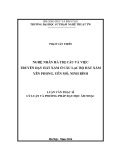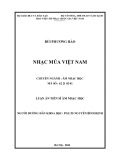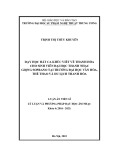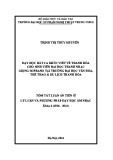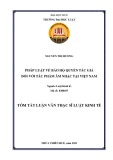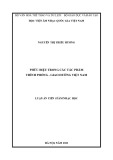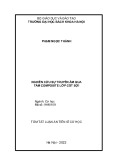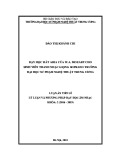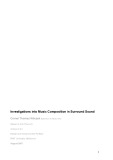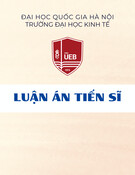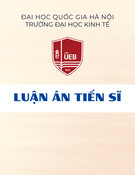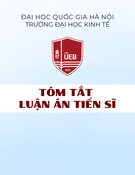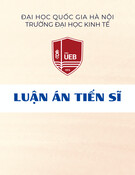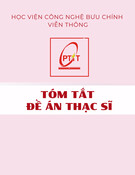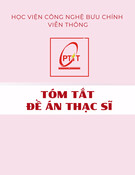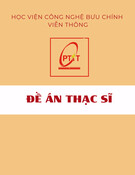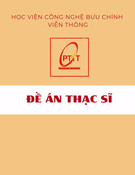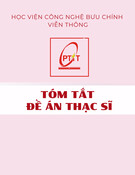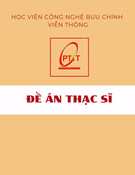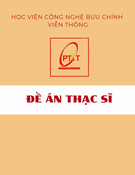
SURFACE RESONANCE Page ISurface ResonanceA project submitted in fulfilment of the requirements for the degree of Master of ArtsEliot Samuel PalmerGrad. Cert. Spatial Information ArchitectureSchool of Art College of Design and Social Context RMIT UniversityJanuary 2010

SURFACE RESONANCE Page 1DeclarationI certify that except where due acknowledgement has been made, the work is that of the artist alone. The work has not been submitted previously, in whole or in part, to qualify for any other academic award. The content of the ADR is the result of work which has been carried out since the official commencement date of the approved research program. Signature Name Eliot PalmerDate 20/06/2010

SURFACE RESONANCE Page 2AcknowledgementsI would like to acknowledge and extend many thanks to Larissa Linnell, Dr Philip Samartzis, Jason Heller, Brian May, Eamon Sprod, James Hullick, Lawrence Harvey and Derek Marr for their inspiration, advice, listening, support and proofreading.I would especially like to thank Darrin Verhagen for his guidance and engagement, Garth Sheridan for his consistent support and heavy lifting, and Nic Whyte for website expertise and assistance. Thank you also to the staff at Warehouse Sound Systems, Tim Catlin and Michael Quinlan at RMIT, and the participants who gave feedback on the vibration compositions and approach to installation.Online resourceThis ADR will be reproduced at http://surfaceresonance.croakinglizard.com, in an html format with the text supported by images, sound and video.

SURFACE RESONANCE Page 3i. Summary 4ii. Contribution to the field 9iii. Background 14Phase 1 Summary 21 1.1 Riddim 25 1.2 Materials 28Phase 2 Summary 31 2.1 Materials 35 2.2 Tactile instrument 37 2.3 Riddim 39 2.4 Presentation 41Phase 3 Summary 43 3.1 Tactile instrument 47 3.2 Hearing and sensation 49 3.3 Materials 51 Phase 4 Summary 56 4.1 Materials 59 4.2 Hearing and sensation 60 4.3 Tactile instrument 61 4.4 Riddim 66Phase 5 Summary 69 5.1 Hearing and sensation 73 5.2 Materials 74Phase 6 Summary 77 6.1 Riddim 81 6.2 Materials 85Presentation context 89 Appendix A Background research notes 95Appendix B Bibliography 103Appendix C Discography 105Appendix D Original proposal extract 107 Contents

SURFACE RESONANCE Page 4Research question and aimsMy project objective was to develop compositions for installation that communicate my findings on felt and heard vibration. I aimed to create works that drew association to listeners’ past experiences and engaged with the way vibration is perceived. At the beginning of the research program, I asked:Through sound design and composition incorporating sensation technology, how can I use physical vibration to draw attention to the role of the body in the experience of sound, and how can I draw upon vibration in musical contexts to achieve this?The question sustained throughout the project, and developed into four key principal research aims or foci, framing my research approach and helping to define the field covered. These concerned:• abstracting musical basslines into an environmental domain• articulating building materials through vibration• composing for a tactile sensation bodily experience • understanding the dialogue between hearing and sensation, and how felt and audible aspects affect awareness and perception of each otheri. SummarySummary
Surface resonance is a sound and tactile sensation research project. Through compositions and an installation, I focused on felt and heard vibration, how they are perceived and how they contribute to the experience of sound.
I explored vibration as a product of low frequency (bass) sound, drawing inspiration from musical contexts where sensation from sound is emphasised. As low frequency sound passes through a space it can stimulate vibrations in a building structure. These vibrations may be experienced physically, through the transmission of energy from the building and into the body, and/or may create vibration sound that is experienced aurally, such as rattles from fixtures or windows. My interest has been in the characteristics of these vibrations and how they may convey connections between sound and the physical aspects of the body or a space. I have explored the idea that vibration, both heard and experienced physically, can change a person’s perception of sound. Compositions were made for vibro-acoustic installation, which combines a ‘tactile table’ system that an audience sits or lies on to experience sensation, with loudspeakers reproducing acoustic material. This ADR supports the evaluation of the compositions by giving body to the research program. It also provides a resource for composers working within the field. It describes the questions asked, the methodology applied, and the outcomes. Given the vibration medium, the descriptions can only partly illustrate the creative process and findings. However, a focus on my conceptual development and research process is provided to show the ideas covered and contribution to the sound arts field.

